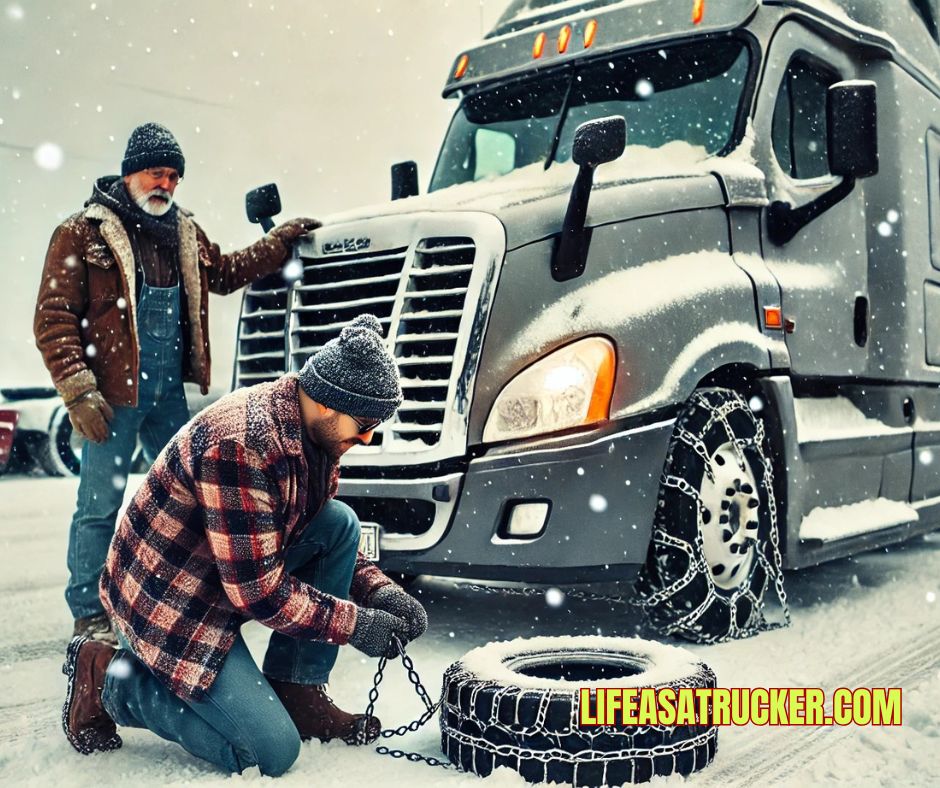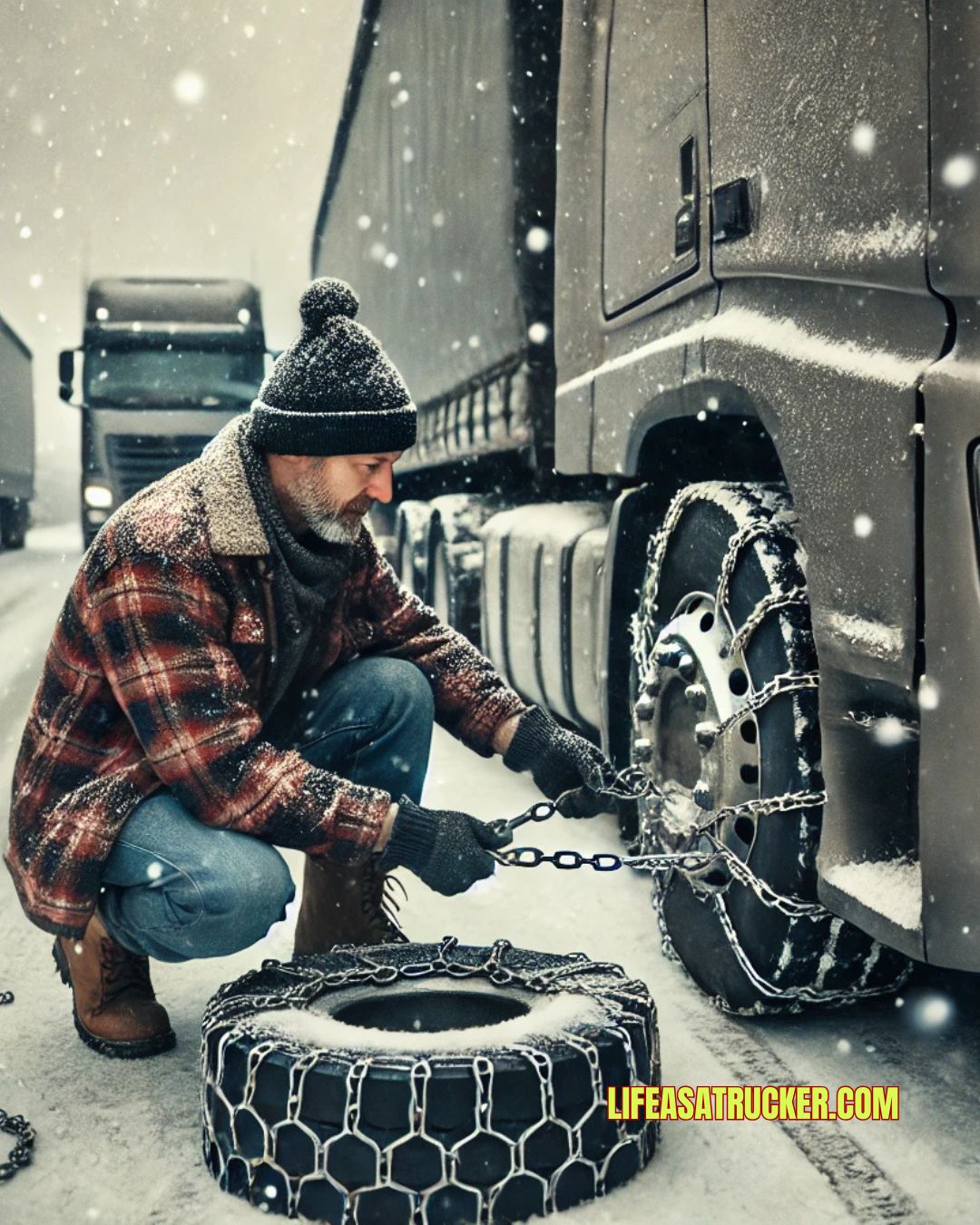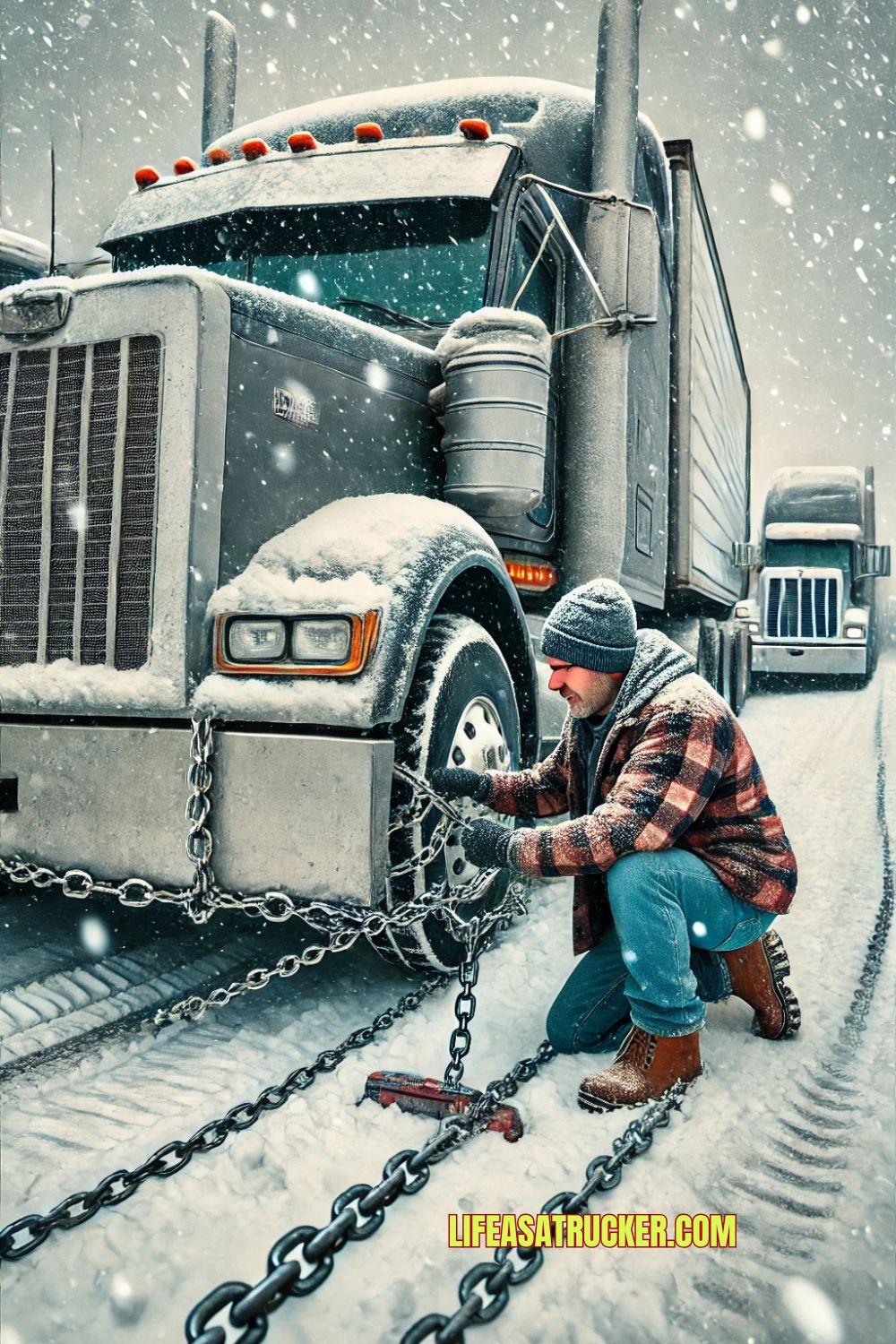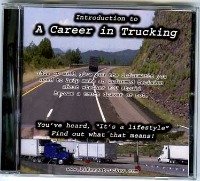Chaining Up for the Winter Driving Conditions

Chaining Up for Winter: How to Master the Skill That Could Save Your Rig (and Your Life)
INTRODUCTION
It’s freezing. The road looks like a curling rink. And that friendly little sign just popped up:
“CHAINS REQUIRED BEYOND THIS POINT.”
Your heart sinks, your knees already ache, and you're thinking, “Did I remember to bring gloves that don’t suck?”
Welcome to winter trucking.
Whether you're battling Donner Pass, wrestling through Wyoming, or stuck in a freak storm on I-40, chaining up isn’t just a job—it’s a rite of passage. And while it might be dirty, cold, and kind of a pain, it’s also the difference between rolling safe and sliding into disaster.
This guide’s going to break it all down—step-by-step, real talk, and a few smart shortcuts. So when it’s time to chain up, you won’t panic. You’ll perform.
Why Chaining Up Matters (More Than You Think)
Chaining isn’t just about following rules—it’s about staying alive and keeping freight moving.
Here’s why it matters:
Traction = Control.
On ice or heavy snow, tire chains give you grip where rubber fails. It’s like snowshoes for your rig.
It’s the Law.
States like California, Colorado, Oregon, and others have mandatory chain laws during winter months. Ignore those? You could get slapped with:
Massive fines
Roadside inspections
Or worst of all… a tow off the mountain you were trying to get over
Your load’s depending on you.
Delays from being unprepared can cost you money, reputation, and future loads.
Example:
In California, when the sign is lit:
Chains go on all four tires of the first drive axle
The outside tires of the second drive axle
And the outer rear trailer axle
Each state is different. Know where you're headed—and what their chain laws are.
What You’ll Need Before You Chain Up
Before you’re elbow-deep in snow and swearing at twisted metal, have these ready:
✅ Chains (the right size for your tire setup)
✅ Chain tensioners or rubber bungees
✅ Kneeling pad (trust us on this one)
✅ Heavy-duty gloves
✅ Headlamp or flashlight
✅ Bright reflective vest (especially if you’re roadside)
✅ Tarp or mat to kneel on (optional but clutch)
Bonus Prep Tip:
Throw a spare set of chains in the side box. If one breaks mid-run, you’ll be glad you did.
Step-by-Step: How to Chain Up Like a Boss
Let’s get into it. Here's your no-B.S., do-this-not-that guide to chaining up right:
1. Find a Safe Spot to Work
Pull off into a designated chain-up area or a wide, flat shoulder far from live lanes.
Engage your parking brake, hit the hazards, and take a breath. You’re not in a rush—you’re making sure you survive the next 50 miles.
2. Lay Out and Inspect Your Chains
Unroll your chains flat on the ground.
You’re checking for:
Twists
Broken links
Frozen knots
Make sure the hooks are facing up, and everything’s untangled.
Pro Tip:
Wear gloves before handling chains. Bare fingers = instant regret.
3. Drape Chains Over Your Tires
Grab the center of the chain and lift it over your drive tires. You want the chain hanging evenly on both sides.
Make sure:
The cross-chains are evenly spaced
Hooks face outward
Slack is roughly the same front and back
4. Connect Inner Hooks First
Crawl under the truck (or reach under if possible) and connect the inner side of the chain first. This part’s uncomfortable, but it's what keeps the chain centered on the wheel.
Then, move to the outer side and secure that hook.
Tip: Use the same number of links on both sides to keep things balanced.
5. Add Tension and Secure
Now it’s time to snug it up.
Use a chain tensioner or rubber bungee to take out the slack.
You're aiming for about a finger’s width between the chain and tire. Not too tight—you want some movement to prevent chain breakage.
6. Roll Forward and Recheck
Drive forward about 100 feet, then stop and check your work.
The chains will settle and shift. If they’re loose, retighten. If they’re centered? You’re good to go.

Pro-Level Chain Tips
💡 Practice When It’s Dry:
Learn chaining when it’s 60 and sunny, not when it's snowing sideways on the mountain. That way, muscle memory kicks in when it counts.
💡 Don’t Wait for the Sign to Light Up:
If you think you’ll need chains soon—pull over before everyone else does and beat the crowd.
💡 Don't Drive on Bare Pavement:
Chains on dry roads = worn chains, damaged tires, and a visit from your maintenance guy. Only use them when you need them.
💡 Max Speed = 30 MPH
Any faster, and you risk snapping a link or wrapping a chain around your axle. Chain breakage can destroy your fender and cost you $$$.
⚠ What About Snow Socks?
You may have heard about snow socks—those fabric tire covers that offer added grip. They’re easier to install, quieter, and lighter than chains.
Sounds great, right?
BUT:
They’re not legal everywhere. Some states (like Colorado) do not accept them as a replacement for chains.
Always check state DOT regulations before relying on alternatives.
Stay Informed in Real Time
Conditions change fast, and chain laws can be activated mid-run.
Stay on top of things by using these:
📱 Apps & Websites:
CalTrans QuickMap
Colorado DOT Chain Law page
DriveBC (Canada)
Waze or Trucker Path for road alerts
Knowing before you roll into a chain-required zone is half the battle.
Final Thoughts: Be the Driver That’s Ready
Chaining up is dirty. It’s cold. It’s annoying.
But it’s also one of the most important skills a trucker can have in the winter.
When done right, it keeps you moving, keeps freight flowing, and most importantly—keeps you alive.
Remember:
Prep ahead of time
Keep your gear accessible
Know the laws for every state you roll through
And don’t wait until it’s too late to learn
📣 CALL TO ACTION
Want more no-fluff trucking advice that actually helps you out on the road?
👉 Watch the chaining-up instructional video on this page
👉 Share your worst (or best) chain-up story in the comments
👉 Pass this guide to a new driver before they learn the hard way
And for more real talk about surviving and thriving in this industry, check out: 🛻 LifeAsATrucker.com — where the road meets wisdom
More Winter Driving Tips
Defensive Driving Tips
Thinking About Trucking? Share this site with your friends
Life As A Trucker Presents...
Ride With Me for Motivation
Use Trucking To Change
Bad Habits






New! Comments
Have your say about what you just read! Leave me a comment in the box below.